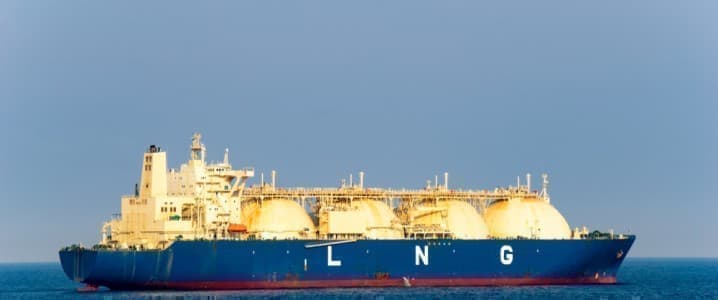Europe is racing to procure as much non-Russian gas as possible following its irreversible decision to break free from Russian dependence by the end of this decade. The race to get alternative gas supply has become a rush to import LNG at a record pace, with plans for new import terminals to accommodate the expected high volumes of the super-chilled fuel for years to come.
Europe’s LNG rush to diversify gas deliveries away from Russia – which is already using gas as a weapon after cutting off supply to Poland and Bulgaria last week – has drawn criticism from climate campaigners. Environmentalists argue that Europe doesn’t need new LNG import infrastructure and should displace Russian gas with renewable energy instead of more gas, to avoid derailing its climate goals of becoming carbon neutral by 2050, after significantly cutting emissions by 2030.
Still, Europe will need more gas, not only by 2030 but even after that, considering that current technology to use biofuels and hydrogen in hard-to-abate industry sectors doesn’t allow it – yet – to ditch natural gas, says Lukas Trakimavi?ius from the research and lessons learned division of the NATO Energy Security Centre of Excellence.
Moreover, many countries, including the UK, Germany, and the Netherlands, use a lot of natural gas for heating.
“It is wrong to assume that, by developing new LNG receiving infrastructure, European governments are abandoning their carbon neutrality plans,” Trakimavi?ius, who has previously worked at NATO and the Lithuanian Ministry of Foreign Affairs, writes in an opinion piece in EURACTIV.
Europe is seeking to diversify its gas supply, but it is also betting big on renewables to reduce its overall use of gas in the medium to long term. EU officials say that the Russian invasion of Ukraine is yet another clear signal that Europe should accelerate its clean energy rollout.
“Putin's war in Ukraine demonstrates the urgency of accelerating our clean energy transition,” European Commission Executive Vice-President for the European Green Deal, Frans Timmermans, said in March when the EU presented its plan to become independent from Russian gas by 2030 and cut reliance on Putin by two-thirds by the end of this year alone.
After the United States and the EU announced at end-March a deal to boost U.S. LNG deliveries to Europe, Jake Schmidt, senior strategic director for international climate at the Natural Resources Defense Council (NRDC) said:
“Instead of supporting further LNG development—which is inconsistent with the world’s climate goals—the U.S. and Europe should ramp up investments in cleaner, smarter and safer ways to power our future.”
Related: The U.S. Shale Patch Is Facing A Plethora Of Problems
Europe is not abandoning its clean energy goals, on the contrary, it aims to accelerate renewable energy take-up. However, solar and wind should be backed by gas-fired baseload capacity during cloudy windless days, while gas is currently powering many energy-intensive industries that cannot run on renewables, including steel making, fertilizers, or petrochemicals.
Therefore, natural gas will be needed for years in Europe, and LNG is currently its best alternative to replace as much Russian gas as soon as possible, along with increased pipeline imports from Norway or Algeria.
The surge in LNG imports in recent months has had LNG terminals in Europe maxed out, limiting how many cargoes the continent can import now before planned new import and regasification terminals can be built and brought online. European countries have already started planning more terminals, intent on becoming independent from Russian supply this decade.
Germany plans to build two LNG import facilities; one at Brunsbuettel and one at Wilhelmshaven. Currently, Germany doesn’t have any LNG import terminals. Europe’s biggest economy, which until two months ago had only sporadically thought of LNG import terminals and imports, now seeks a long-term deal with one of the world’s top LNG exporters, Qatar.
Just yesterday, the leaders of Greece and Bulgaria launched the construction of an LNG import terminal near the northern Greek port of Alexandroupolis, aimed at diversifying supply to southeast Europe and cutting its heavy reliance on Russian gas.
Europe’s short and medium-term thirst for LNG is good news for U.S. export developers, but it may not be a key driver for American LNG projects beyond 2030, analysts say.
“A European customer might want gas in 2025 or 2030, but not in 2040 and likely not by 2045. This mismatch prevents U.S. LNG projects from moving forward with European help,” Nikos Tsafos, a James R. Schlesinger Chair in Energy and Geopolitics at the Center for Strategic and International Studies, wrote in early March.
Europe wants a lot of non-Russian gas now, but, ideally, it wants to not want an increased gas supply a decade or two from now.
By Tsvetana Paraskova for Oilprice.com
More Top Reads From Oilprice.com:
- Can Brazil Help Fill The Supply Gap Left By The U.S. Ban On Russian Oil?
- 3 Shale Stocks Bucking A Worrying Trend
- Iran Moves Ahead With $500 Million South Pars Oil Development Deal


















